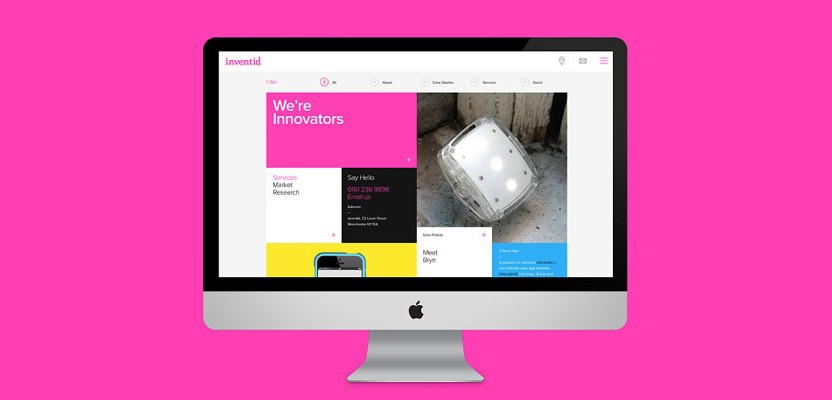Web designers/developers are employed across all industry sectors from finance and retail to public organisations. They may be employed directly by IT consultancies, software houses, web design agencies or work in an organisation's IT department. There are job opportunities throughout the UK, with a higher concentration in the South East
View People View Companies View Jobs
Job Description, Salaries and Benefits
A web designer/developer is responsible for the design, layout and coding of a website. They are involved with the technical and graphical aspects of a website - how the site works and how it looks. They can also be involved with the maintenance and update of an existing site.
After establishing the target audience for a website and identifying the type of content it will host, a web designer/developer will:
- write the programming code, either from scratch or by adapting existing website software and graphics packages to meet business requirements
- test the website and identify any technical problems
- upload the site onto a server and register it with different search engines.
A web designer/developer normally works between 37 and 40 hours a week, 9am to 5.30pm, Monday to Friday. Additional hours may be required to meet deadlines, which could include evenings and weekends.
Salaries range from about £18,000 to £40,000 or more.
A web designer/developer should:
- have skills in software programming and graphics
- have creativity and imagination
- be adaptable and able to pick up new techniques
- have good interpersonal and communication skills
- keep up to date with advances in computer technology and how this affects the business environment
Most employers expect applicants to have a degree-level education, often with relevant work experience and vocational skills. A range of qualifications are available that provide a good grounding in web design, interactive design, graphic design and internet technology.
Training is done on the job, and includes in-house and external training courses. As the IT industry continues to develop it is vital for web designers/developers to keep up to date with new software and technology. Professional qualifications can be obtained from various professional bodies, including the British Computer Society.
The normal progression route for a web designer/developer is to become a senior or principal web designer/developer. Experienced web designers/developers can use their experience and knowledge to become self-employed.
What is the work like?
A web designer/developer is responsible for the design, layout and coding of a website. They are involved with the technical and graphical aspects of a website; how the site works and how it looks. They can also be involved with the maintenance and update of an existing site.
In order to design a website, a web designer/developer will:
- establish the purpose of the website based upon its target audience
- identify the type of content the site will host
- determine any functionality that the site must support, for example, whether it will handle financial transactions or enquiries
- give guidance on layout, colours and styles.
This will determine the type of technology to use and how complex the site will be. The web designer/developer will then:
- write the programming code, either from scratch or by adapting existing website software and graphics packages to meet business requirements
- test the website and identify any technical problems
- upload the site onto a server and register it with different search engines.
A web designer/developer will usually work as part of a team, which will include a web author/editor and an account manager.
Hours and Environment
A web designer/developer normally works between 37 and 40 hours a week, 9am to 5.30pm, Monday to Friday. Additional hours may be required to meet deadlines, which could include evenings and weekends.
It is possible to be self-employed and work from home. Part-time and flexible hours may be available.
It is usual to work in an open-plan office environment. A limited amount of travelling may be required.
Salary and other benefits
These figures are only a guide, as actual rates of pay may vary, depending on the employer and where people live.
- Starting salaries may be around £18,000 a year.
- With experience, web designers/developers may earn about £30,000.
- Salaries for senior designers/developers may be in excess of £40,000.
Skills and Personal Qualities
A web designer/developer should:
- have skills in software programming and graphics
- have creativity and imagination
- be adaptable and able to pick up new techniques
- have good interpersonal and communication skills
- be able to work on their own or in a team
- be able to work to tight deadlines
- be thorough and precise in their work
- be able to multi-task
- be aware of international web standards and protocols
- be able to use their initiative.
Interests
It is important to be interested in:
- keeping up to date with advances in computer technology and how this affects the business environment
- the internet
- troubleshooting and problem solving.
Getting In
The IT industry is a rapidly expanding global marketplace and the internet continues to develop at great speed. Web designers/developers are employed across all industry sectors from finance and retail to public organisations. They may be employed directly by IT consultancies, software houses, web design agencies or work in an organisation's IT department.
There are job opportunities throughout the UK, with a higher concentration in the South East. There are also opportunities overseas.
Vacancies are advertised on company and recruitment websites, and in trade publications such as Computer Weekly and Computing. The local and national press also advertise positions.
Entry for young people
Most employers expect applicants to have a degree-level education, often with relevant work experience and vocational skills.
There are a range of qualifications which provide a good grounding in web design, interactive design, graphic design and internet technology. These include:
- BTEC National Diploma in Art and Design (Multimedia), Computer Studies or IT. Applicants typically need four GCSEs/S grades (A-C/1-3) or equivalent qualifications and courses normally last two years, full time.
- SQA National Certificate in IT. Applicants normally require four GCSEs/S grades (A-C/1-3), and courses normally last two years, full time.
- BTEC/SQA higher national diplomas. Colleges normally ask for at least one A level/two H grades and four GCSEs/S grades (A-C/1-3), or a BTEC/SQA national certificate/diploma in a relevant subject. Courses can be full time or part time, and some colleges offer sandwich courses, with one year's work experience.
- NVQs/SVQs are available in IT practitioner subjects, including Design at Levels 2 to 4.
- Degrees in IT, computer science, programming, software engineering and other subjects. More specific degree subjects include web development, web design, multimedia design and web content management. Applicants usually need at least two A levels/three H grades. Degree courses usually last three or four years full time or four or five years for sandwich courses. Check with individual colleges and universities for specific entry requirements.
Employers consider applicants from traditional academic degree courses such as maths and physics as well as graduates of business and arts/humanities degrees who have a flair for problem solving in a logical manner.
It is sometimes possible to start in programming work and progress to become a web designer/developer. There is also an Apprenticeship in IT.
Apprenticeships which may be available in England are Young Apprenticeships, Apprenticeships and Advanced Apprenticeships. To find out which one is most appropriate log onto www.apprenticeships.org.uk or contact your local Connexions Partnership.
It is important to bear in mind that pay rates for Apprenticeships do vary from area to area and between industry sectors.
There are different arrangements for Apprenticeships in Scotland, Wales and Northern Ireland. For further information contact Careers Scotland www.careers-scotland.org.uk, Careers Wales www.careerswales.com; and for Northern Ireland contact COIU www.delni.gov.uk.
Entry for adults
Relevant work experience in programming and/or design would be an advantage.
Access courses are available for people with no formal qualifications who want to study for a degree.
Training
Training is done on the job, and includes in-house and external training courses.
As the IT industry continues to develop it is vital for web designers/developers to keep up to date with new software and technology. Professional qualifications can be obtained from various professional bodies, including the British Computer Society (BCS). A number of private sector companies also offer training courses and computing qualifications.
Getting on
The normal progression route for a web designer/developer is to become a senior or principal web designer/developer.
Experienced web designers/developers can use their experience and knowledge to become self-employed. Opportunities also exist in lecturing and training.
Overseas work is possible.
Further Information
- The British Computer Society (BCS), 1st Floor, Block D, North Star House, North Star Avenue, Swindon SN2 1FA. 01793 417417.
- e-skills UK, 1 Castle Lane, London SW1E 6DR. 020 7963 8920.
- The Institution of Analysts and Programmers, Charles House, 36 Culmington Road, London W13 9NH. 020 8567 2118.
Further Reading
- Careers Information leaflets from the British Computer Society
- Careers in Computing and Information Technology - Kogan Page
- CRAC Degree Course Guides: Mathematics, Statistics & Computer Science - Hobsons
- Information Technology - AGCAS
- Working in computers & IT - Connexions
Magazines
- Computer Weekly
- Computing
- PC Pro





